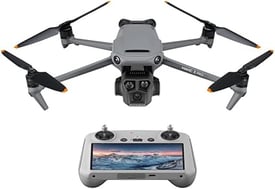In the fog of war, timing is everything. And when diplomacy and destruction intersect, the consequences ripple far beyond the battlefield. On June 1, 2025, Ukraine launched a stunning and audacious drone offensive codenamed Operation Spider’s Web — a campaign that not only obliterated key Russian air assets deep inside enemy territory but also threw a diplomatic wrench into the already fragile peace talks ongoing in Istanbul.
The operation was hailed as a tactical marvel by many Western analysts, yet its strategic timing — and the role of President Volodymyr Zelensky in personally authorizing it amidst negotiations — raised serious questions about Kyiv's commitment to diplomacy.
I. Anatomy of the Operation: A Tactical Masterstroke
1. The Code and Concept
Operation Spider's Web took inspiration from nature’s most patient predator. The spider waits in silence until its web is disturbed, then strikes with precision. Ukrainian intelligence and special forces mirrored this ethos in a premeditated strike on multiple Russian airbases. What distinguished this operation from past attacks was not just its scope, but its synchronized multi-theater execution, deep-strike capability, and use of low-cost, high-impact weaponry.
2. Targets: Strategic Nodes of the Russian Air Machine
Ukraine struck five key Russian airbases in a single day:
Dyagilevo Air Base (Ryazan Oblast) – Home to long-range Tu-22M3 bombers.
Belaya Air Base (Irkutsk) – Hosting nuclear-capable Tu-95MS platforms.
Ivanovo Severny Air Base (Ivanovo) – Contained airborne command-and-control aircraft.
Olenya Air Base (Murmansk) – A critical Arctic hub for Russian aerial operations.
Ukrainka Air Base (Amur Oblast) – A Pacific fleet support node for strategic bombers.
These bases were not randomly selected; each represented a pillar of Russia’s ability to project long-range power. Their destruction not only disrupted operations but also sent a psychological shockwave through the Kremlin’s General Staff.
3. The Arsenal: Drones That Changed the Game
Ukraine deployed 117 FPV (First-Person View) drones, many launched covertly from within Russia. These drones featured:
Low radar visibility
High maneuverability
Remote-controlled precision
Drone control was handled via mobile encrypted relays, some operated from sleeper cells inside Russia and others from secret command centers in northeastern Ukraine. Most drones were built with modular warheads designed to target:
Aircraft fuel bays
Avionics compartments
Radar dishes and ground infrastructure
The operation also employed EW deception using decoy swarms that overwhelmed Russian radar defenses, forcing misfires and misallocation of interception efforts.
4. Destruction Unleashed: Quantifying the Strike
According to Western intelligence:
41 aircraft destroyed (Tu-95MS, Tu-22M3, A-50U, and Il-76 included)
Over $7 billion in hardware lost
Dozens of personnel casualties
Radar systems and airbase fuel depots hit
This represents the single most devastating loss to Russia's air force since World War II.
II. Strategic Significance: Beyond the Tactical
1. A Triumph of Asymmetric Warfare
Ukraine has long operated without air superiority. This operation proved that you don't need a massive air force to disable one. By using “cheap but smart” drones, Ukraine redefined the rules of aerial engagement.
The asymmetric advantage:
A $30,000 drone vs. a $300 million strategic bomber
Human-controlled attacks with minimal loss risk
GPS spoofing and visual feed control for pinpoint targeting
2. Exposing Russian Weaknesses
The most shocking revelation? Russian airbases lacked:
Hardened aircraft shelters (HAS)
Integrated drone defense systems
Effective early warning of stealth drone incursions
This unpreparedness has sparked a panic overhaul within the Russian Ministry of Defense, with emergency procurement of jamming systems and mobile hangars.
3. Operational Independence
For the first time, Ukraine acted without real-time Western satellite coordination. This marks a new chapter of operational sovereignty for Kyiv. It also sends a clear message to Moscow: Ukraine no longer needs Washington's permission to retaliate.
III. Diplomacy Undermined: Zelensky's Gamble
1. Peace Talks in Istanbul
Just as the drone squadrons took off, Zelensky's delegation was seated across the table from Russian negotiators in Istanbul. The agenda: potential ceasefire lines, humanitarian corridors, and prisoner swaps. Russia had reportedly shown limited flexibility on halting offensives in Kharkiv and Sumy.
The timing of the operation made headlines worldwide. Diplomats were caught unaware. Zelensky later claimed the operation was planned weeks in advance and had no bearing on the talks. However, the optics could not be more disastrous.
2. The Zelensky Paradox
Volodymyr Zelensky’s wartime persona has evolved from comedian-turned-president to defiant wartime leader. However, Operation Spider’s Web showcases a darker side:
A president so committed to military victory that he risks political isolation
A leader who greenlights massive strikes during peace overtures
A tactician perhaps losing sight of long-term strategic diplomacy
Critics now argue Zelensky is overreaching, emboldened by early Western support and battlefield gains. His approval ratings remain high domestically, but in Europe, diplomatic fatigue is setting in.
IV. The Russian Response: Humiliation and Retaliation
1. Political Fallout
Russian media immediately labeled the attack as "terrorism with Western fingerprints."
Dmitry Medvedev called for the full cancellation of peace talks
Vladimir Putin ordered a round-the-clock defense readiness review
Parliament passed emergency laws to militarize regional airports
Public outrage in Russia is mounting. Despite censorship, leaked images of destroyed aircraft have gone viral on Telegram channels.
2. Military Countermeasures
Intensified bombing of Kyiv, Dnipro, and Odesa
Targeted assassinations of Ukrainian intelligence operatives
New rules of engagement allowing deep strikes beyond Ukrainian borders
Already, a wave of missile strikes has begun hitting infrastructure nodes in Zaporizhzhia and Chernihiv.
V. Escalation Ladder: Where Could This Lead?
1. Full Retaliatory Mobilization
Russia could:
Mobilize additional conscripts under martial law
Use Belarus as a springboard for a northern offensive
Strike Ukrainian drone manufacturing in third-party states like Poland
2. NATO Involvement
If Russia miscalculates and hits NATO territory during a drone hunt or retaliation, the conflict risks exploding into a wider European war. The Baltics and Poland are already tightening airspace security.
3. Cyber Escalation
Cybersecurity firms report increased activity from Russian state-linked hacker groups. Ukraine’s electrical grid and banking networks are under siege.
VI. International Reaction: Praise, Panic, and Politics
1. NATO and the U.S.
NATO Secretary-General offered a muted response, emphasizing Ukraine’s right to self-defense but urging "strategic prudence."
The U.S. State Department said it was not informed in advance of the strikes. Congress remains divided:
Hawks applaud Zelensky’s courage
Doves question escalation
2. EU Fatigue and Discontent
France, Germany, and Italy have grown more critical:
Quiet disapproval of strikes during peace talks
Calls for Zelensky to clarify Kyiv's long-term objectives
Concerns over Ukrainian escalation dragging Europe deeper into war
VII. Zelensky: Wartime Hero or Strategic Liability?
Zelensky’s legacy may be defined not by how he fought, but by how he ended the war. Operation Spider’s Web presents a moral and strategic dilemma:
He proved Ukraine can sting Russia anywhere, anytime
But he also risked derailing the best chance for peace since 2022
History may remember him as a lion who roared one time too many.
VIII. Future Scenarios: Endgame or Escalation?
Scenario 1: Military Breakthrough
Ukraine uses its drone leverage to push Russian forces out of Donbas and Kherson. Peace talks resume with Kyiv in a position of strength.
Scenario 2: Escalated War
Russia retaliates with overwhelming force, possibly using tactical nuclear threats to dissuade further Ukrainian strikes.
Scenario 3: Diplomatic Collapse
Peace talks disintegrate entirely. Ukraine loses Western support over perceived recklessness. The war drags into 2026.
A Web Well-Spun, But At What Cost?
Operation Spider’s Web will be studied for decades as a case study in 21st-century warfare. It proved that a small, agile nation can bring a superpower to its knees with intelligence, innovation, and resolve.
But at what cost?
Zelensky may have caught Moscow in his web, but he may also have entangled Ukraine in a longer, more perilous war. History’s final judgment will depend not just on battlefield wins, but on the wisdom to know when to strike—and when to negotiate.






